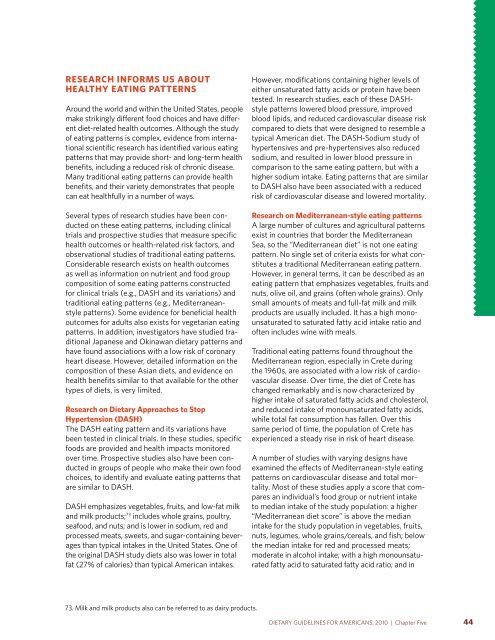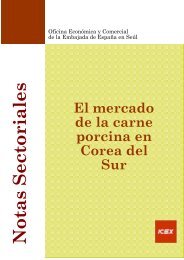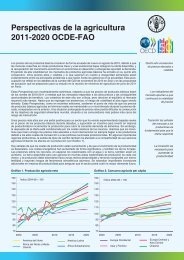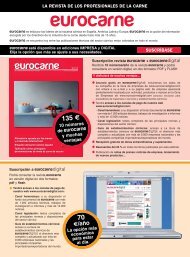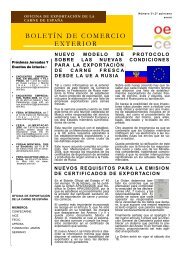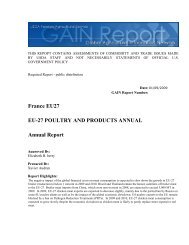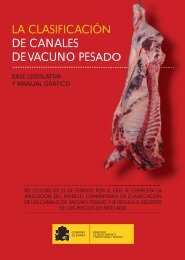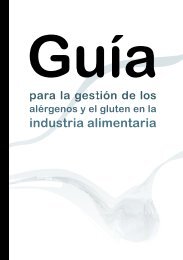Dietary Guidelines for Americans - SchoolNutritionAndFitness.com
Dietary Guidelines for Americans - SchoolNutritionAndFitness.com
Dietary Guidelines for Americans - SchoolNutritionAndFitness.com
- No tags were found...
You also want an ePaper? Increase the reach of your titles
YUMPU automatically turns print PDFs into web optimized ePapers that Google loves.
esearch in<strong>for</strong>Ms us aBouthealthy eating PatternsAround the world and within the United States, peoplemake strikingly different food choices and have differentdiet-related health out<strong>com</strong>es. Although the studyof eating patterns is <strong>com</strong>plex, evidence from internationalscientific research has identified various eatingpatterns that may provide short- and long-term healthbenefits, including a reduced risk of chronic disease.Many traditional eating patterns can provide healthbenefits, and their variety demonstrates that peoplecan eat healthfully in a number of ways.Several types of research studies have been conductedon these eating patterns, including clinicaltrials and prospective studies that measure specifichealth out<strong>com</strong>es or health-related risk factors, andobservational studies of traditional eating patterns.Considerable research exists on health out<strong>com</strong>esas well as in<strong>for</strong>mation on nutrient and food group<strong>com</strong>position of some eating patterns constructed<strong>for</strong> clinical trials (e.g., DASH and its variations) andtraditional eating patterns (e.g., Mediterraneanstylepatterns). Some evidence <strong>for</strong> beneficial healthout<strong>com</strong>es <strong>for</strong> adults also exists <strong>for</strong> vegetarian eatingpatterns. In addition, investigators have studied traditionalJapanese and Okinawan dietary patterns andhave found associations with a low risk of coronaryheart disease. However, detailed in<strong>for</strong>mation on the<strong>com</strong>position of these Asian diets, and evidence onhealth benefits similar to that available <strong>for</strong> the othertypes of diets, is very limited.research on dietary approaches to stophypertension (dash)The DASH eating pattern and its variations havebeen tested in clinical trials. In these studies, specificfoods are provided and health impacts monitoredover time. Prospective studies also have been conductedin groups of people who make their own foodchoices, to identify and evaluate eating patterns thatare similar to DASH.DASH emphasizes vegetables, fruits, and low-fat milkand milk products; 73 includes whole grains, poultry,seafood, and nuts; and is lower in sodium, red andprocessed meats, sweets, and sugar-containing beveragesthan typical intakes in the United States. One ofthe original DASH study diets also was lower in totalfat (27% of calories) than typical American intakes.However, modifications containing higher levels ofeither unsaturated fatty acids or protein have beentested. In research studies, each of these DASHstylepatterns lowered blood pressure, improvedblood lipids, and reduced cardiovascular disease risk<strong>com</strong>pared to diets that were designed to resemble atypical American diet. The DASH-Sodium study ofhypertensives and pre-hypertensives also reducedsodium, and resulted in lower blood pressure in<strong>com</strong>parison to the same eating pattern, but with ahigher sodium intake. Eating patterns that are similarto DASH also have been associated with a reducedrisk of cardiovascular disease and lowered mortality.research on Mediterranean-style eating patternsA large number of cultures and agricultural patternsexist in countries that border the MediterraneanSea, so the “Mediterranean diet” is not one eatingpattern. No single set of criteria exists <strong>for</strong> what constitutesa traditional Mediterranean eating pattern.However, in general terms, it can be described as aneating pattern that emphasizes vegetables, fruits andnuts, olive oil, and grains (often whole grains). Onlysmall amounts of meats and full-fat milk and milkproducts are usually included. It has a high monounsaturatedto saturated fatty acid intake ratio andoften includes wine with meals.Traditional eating patterns found throughout theMediterranean region, especially in Crete duringthe 1960s, are associated with a low risk of cardiovasculardisease. Over time, the diet of Crete haschanged remarkably and is now characterized byhigher intake of saturated fatty acids and cholesterol,and reduced intake of monounsaturated fatty acids,while total fat consumption has fallen. Over thissame period of time, the population of Crete hasexperienced a steady rise in risk of heart disease.A number of studies with varying designs haveexamined the effects of Mediterranean-style eatingpatterns on cardiovascular disease and total mortality.Most of these studies apply a score that <strong>com</strong>paresan individual’s food group or nutrient intaketo median intake of the study population: a higher“Mediterranean diet score” is above the medianintake <strong>for</strong> the study population in vegetables, fruits,nuts, legumes, whole grains/cereals, and fish; belowthe median intake <strong>for</strong> red and processed meats;moderate in alcohol intake; with a high monounsaturatedfatty acid to saturated fatty acid ratio; and in73. Milk and milk products also can be referred to as dairy products.DIETARY GUIDELINES FOR AMERICANS, 2010 | Chapter Five 44


